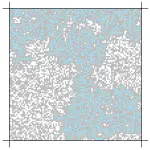Filtering Data with L2 Regularisation
I have just finished reading Momentum Strategies with L1 Filter by Tung-Lam Dao. The smoothing results presented in this paper are interesting and I thought it would be cool to implement the L1 and L2 filtering schemes in R. We’ll start with the L2 scheme here because it has an exact solution and I will follow up with the L1 scheme later on.
Read More →